Meet an Educator is a monthly series by Early Bird, where we feature the work of educators across India who are actively spreading the joy of birds and nature. This month’s featured educator is Titash Chakrabarti, a nature enthusiast and musician from Kolkata, who focuses on engaging children with nature through his initiative ‘School of Birds’.
Do tell us about yourself, where you are from, and your work.
Hi, I am Titash from Kolkata, a metropolis that is built-up enough to distance one from their natural roots and slow enough to allow one to escape the downward spiraling pigeonhole of modern-day human civilization.
I am a nature enthusiast, a musician, and a songwriter. I have been a music teacher since 2015, while learning all the time through collaborative jams/projects with musicians of various genres. I am also the founder and a full time nature educator/facilitator at School of Birds, a project that started in 2016, which aims to introduce children to the magical world of Nature through the bird’s eye & sow the seeds of conservation as a way of life in these dire hours of climate crisis.
At School of Birds, I am part of a team that is dedicatedly working on creating a curriculum to engage children through hands-on activities, integrating science and creative arts, with sustainability at its core.
I would also like to take this opportunity to thank the Birdwatchers’ Society because, without their guidance in pedagogy, capacity to facilitate a variety of programmes and capability of mobilizing resources, I would not have the honour to get featured on this blog.
What excites you about the natural world?
My childhood was spent in a suburban environment of butterflies, dragonflies, damselflies, snakes, garden lizards, skinks, owls, vultures etc. I also grew up in a household of music & poetry, which spoke to me of the mind-boggling diversity, the intricate interconnectedness and the unsolved mysteries of the natural world. I was privileged enough to be a free ranging child, always exploring the neighbourhood and expanding my horizons on foot or a bicycle, never in search of wildlife though, rather exploring my own wild side.
I guess all of these things played a role when the following epiphanies hit me, hard;
1) We humans are, well, tiny specks—microscopic really—in the grand cosmic scale.
2) Life on Earth, from bacteria to birds, from mushrooms to mammals, have branched off from the main trunk of the “Tree of Life.”
Does that mean that the Tailorbird comes to my window to hear a distant cousin sing? Does that mean that you can talk to a King Cobra while you are locked in a staring contest? While humanity is still reeling in the shackles of racism, does that mean that we can break through the barriers of not just race but species, genuses, families, orders, phylums, classes and so on?
After that, a bird on a perch was not just an object to watch and admire, it was a thinking, feeling being to be observed and a possible connection established with a not-so-distant relative.
Isn’t that exciting?
When and how did you get interested in bird/nature education?
I have been a nature documentary buff ever since childhood. In the later half of 2013, I got introduced to the BBC Life series by a friend and my life took a much needed turn. I was working in Raichur, Karnataka back then. After finishing the 10 episodes of “BBC – Life of birds”, I could not sleep in anticipation of dawn. I stepped out that morning to find my backyard had exotic birds (at least that was the feeling at that time). “Private life of plants”, “Life in the undergrowth”, “Life in cold blood” & “Life of mammals” followed soon after.
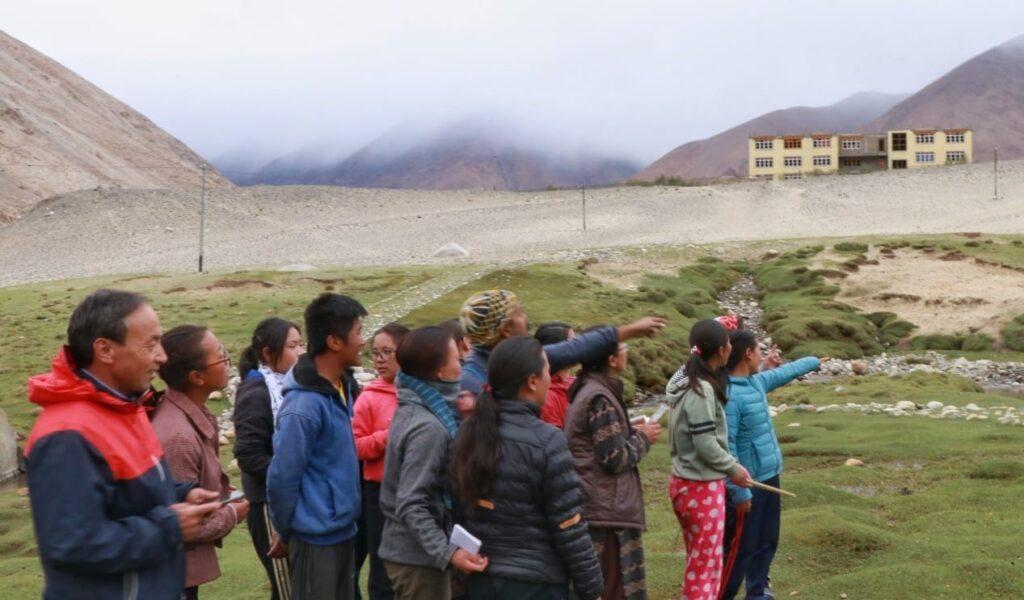
Photo credits: Aranya Bandyopadhyay
I quit my corporate job a year later and embarked on a journey of exploring life, my own and the ones with whom I coexisted in the subcontinent. I have also been guilty of preaching the “story” of evolution to whoever I have come across and befriended in this short while. I would rewatch the episodes with them, and connect the dots in this grand epic further.
It was in 2016 that my mother had suggested I go to a school (where she and my father were involved) and introduce the children to these documentaries. That was the first School of Birds venture, although, I suppose, the seeds were sown in late 2013, when my head was turned, away from this “downward spiraling pigeonhole of modern-day civilization” and towards birds and other creatures with whom we share this blue-green planet.
What do you hope to achieve through your education work?
What fuels me these days in my journey is to gain the validation and love of children. I think there’s a lot to learn from children. In this regard, I believe the term facilitator is more apt than educator in many cases.
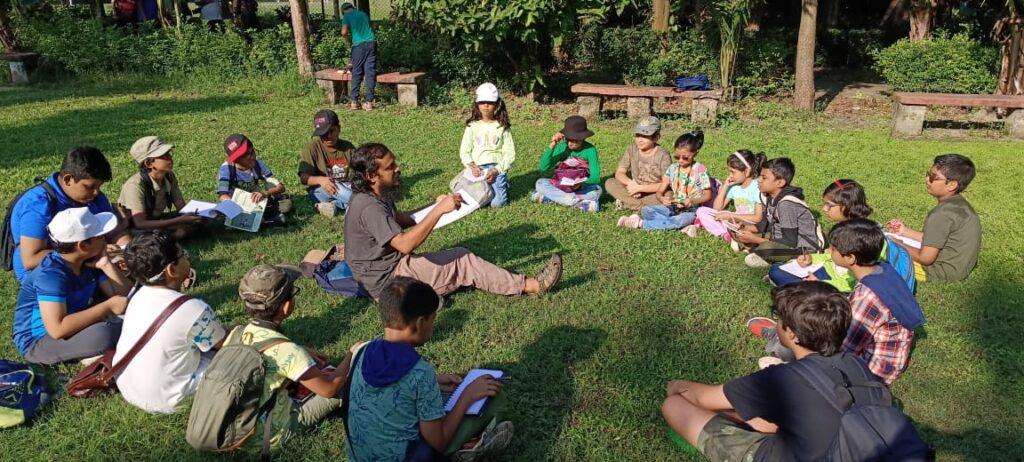
Photo credits: Arnab Raychoudhury
Children are fast learners and great innovators. I believe the role of a teacher is to create an inclusive environment for the children and to facilitate them with the right tools. I also believe that there is a gaping hole in this regard in our formal education system which aims to create obedient workers rather than critical thinkers and problem solvers. Hence, the biggest achievement would be to create a culture where, with proper facilitation, children engage in collaborative problem-solving through innovation, each contributing their own unique skills. Proper documentation of the process can have a beautiful ripple effect, wherein others can learn effectively, in this day and age of networking, where information travels faster than sound.
The same needs to be incorporated in the formal education system. That is, of course, THE DREAM! It would require a committed collaboration of like-minded individuals, communities & organizations to achieve this. I would like to play my part in this humongous process.
Why do you believe it is important for children to learn about birds or connect with nature?
We are all natural beings. I believe that we cannot be separated from Nature. However, I do agree that much of human civilization looks at themselves as a separate entity, and the rest of the natural world as only a pool of resources to be harvested and even exploited. We have slowly climbed up the “food pyramid” and become the gods on this planet. This false notion needs to be broken. Our lives are as fragile as a Nestless Tern’s unguarded egg in a hurricane, a slug lumbering across a busy expressway.
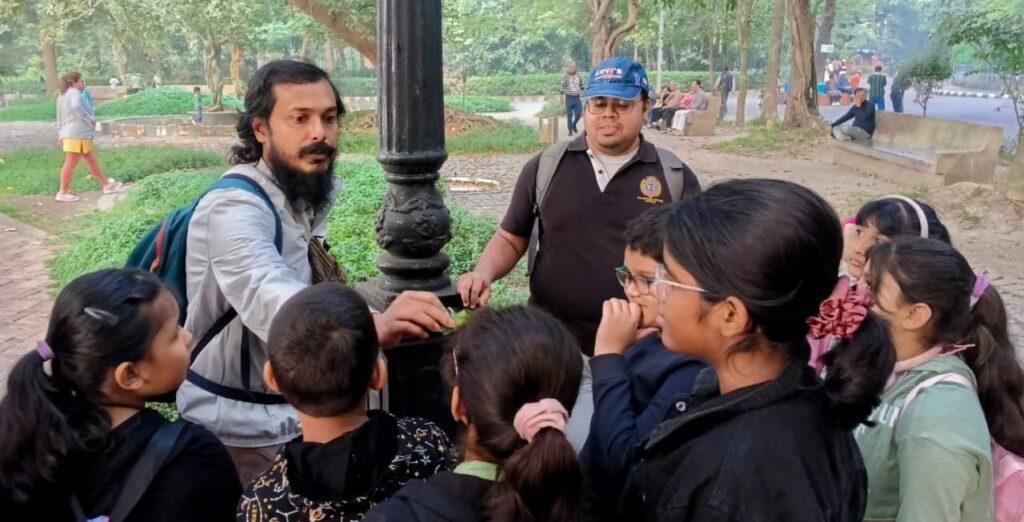
Photo credits: Arnab Raychoudhury
We are not standing on top of the “food pyramid”, rather, we are a part of an intricate and delicate food web which is getting disturbed by our actions. There comes the role of an educator. Children need to be sensitised and educated regarding this, like us adults have been, by our previous generations of environmental stewards. The need for environmental stewardship is more than ever before as the Earth grows warmer every passing day.
Introducing children to the various elements of Nature, its life forms, the soil, the rivers, the rocks etc and their interconnectedness, is the best way to start off on this journey in re-establishing the fact that we all are indeed only a small part of an ecosystem to start with, a living planet and the grand scheme of Nature at large.
What tools or resources have helped you in teaching about birds? Can you describe an approach that has worked exceptionally well for you?
Towards the end of 2023, I had started using the Early Bird flashcards as a teaching tool. The general design of the cards and the vital information on them have the magnetic quality of drawing children’s attention. We have, in due course, also developed a few other activities involving the flashcards, that work wonders, thanks to the cards again.
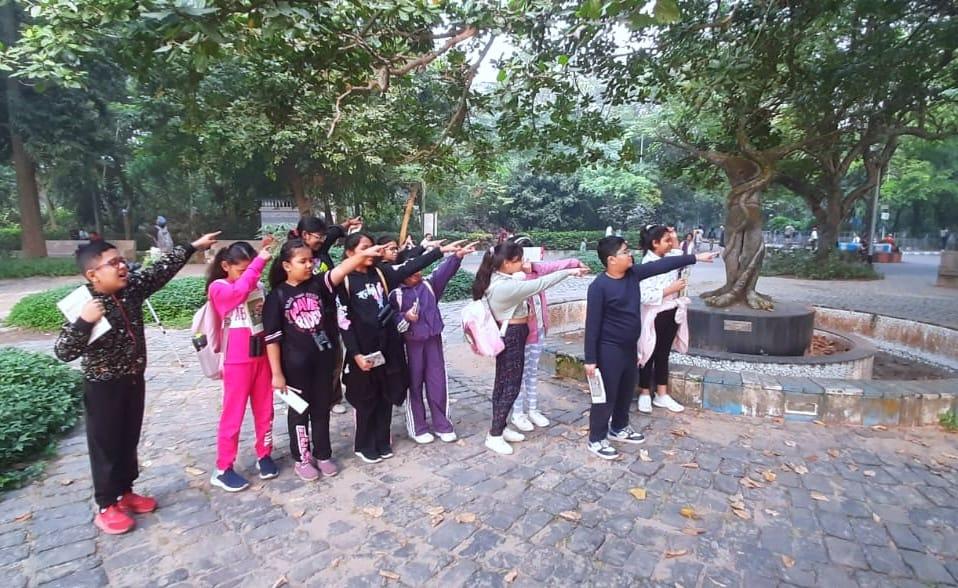
Photo credits: Hiya Chatterjee
In March 2024, I attended the Birding Buddies workshop by Early Bird held in Kolkata in association with the Birdwatchers’ Society. It was eye-opening to say the least. One particular activity caught my attention the most, Squiggle bird. I have used this as a tool on many occasions and had a 100% success rate in letting the children’s imaginations fly. I have developed a spin-off of this activity called Squiggle dino-bird, where one basically makes a squiggle bird and then adds dinosaur features like teeth, scales and a long bony tail in order to subtly introduce the little ones to the theory of evolution, although in the reverse order (bird to dinosaur), a reverse evolution, a revolution maybe?
Another activity I have helped co-develop is creating simple 2D bird/animal puppets. One can make a cut out of a bird/animal from a mountboard (or similar) and make them move their mandibles, tails, legs, heads etc. If a classroom has developed 10 such puppets, the facilitator can guide the children to create a story using two or more species about their interactions in the wild. This is a fairly new activity but it is proving quite effective in teaching bird/animal behaviour and their inter-relationships, in a fun, interactive and collaborative manner.
Have you encountered a significant challenge as a bird/nature educator, how did you overcome it?
Every journey battles through headwinds!
This would be an appropriate time to mention that my friend, Anandarup Bhadra, has been a constant pillar for this project right from its inception. For us, the challenge was both internal and external. School of birds being a passion project, we did not want to monetise it for the longest time, with the fear of compromising on the core values behind the idea (dirty money and all that!). Before long, we realised that it was not a sustainable plan.
We did a few workshops within the framework of a crowdfunding model and we had a great response from our audience who were closely following our voluntary work and wanted to help. Somehow, this also seemed a bit odd after a while to be funding our ventures from our inner circles. We kept going back to the voluntary model and searching for a proper source for the funds we required to take this a step further.
The external reality was a paradox: institutions that valued such work often lacked the funds, while those with the resources remained elusive, requiring connections we simply didn’t have. Yet, we were in no rush—content to let things unfold in their own time.
The breakthrough came in August 2023 when I presented the project at a Birdwatchers’ Society meeting, where I’m also a member. While I’d pitched the idea countless times before, this moment was different. The BWS team embraced it wholeheartedly, offering not just support but a platform to grow. Today, under the guidance of my colleagues at BWS, I can proudly say that the School of Birds has now fledged.
Do share any memorable moment or experience you have had in teaching kids about birds/nature. Can you recall any insightful instance that shaped your perspective?
Our project spent a lot of its incubation period in the rural setting of a village called Chandra in the Bankura district of West Bengal. From the first venture in March 2016 with 11 children, it had grown to a classroom (without walls) of 52 within a span of months. The ulterior objective during that phase was to create empathy towards wildlife, amongst children. Birdwatching was always at the forefront of our activities with interactive indoor sessions about animal behaviour, intelligence and their similarities and dissimilarities with us humans, who are animals nevertheless.
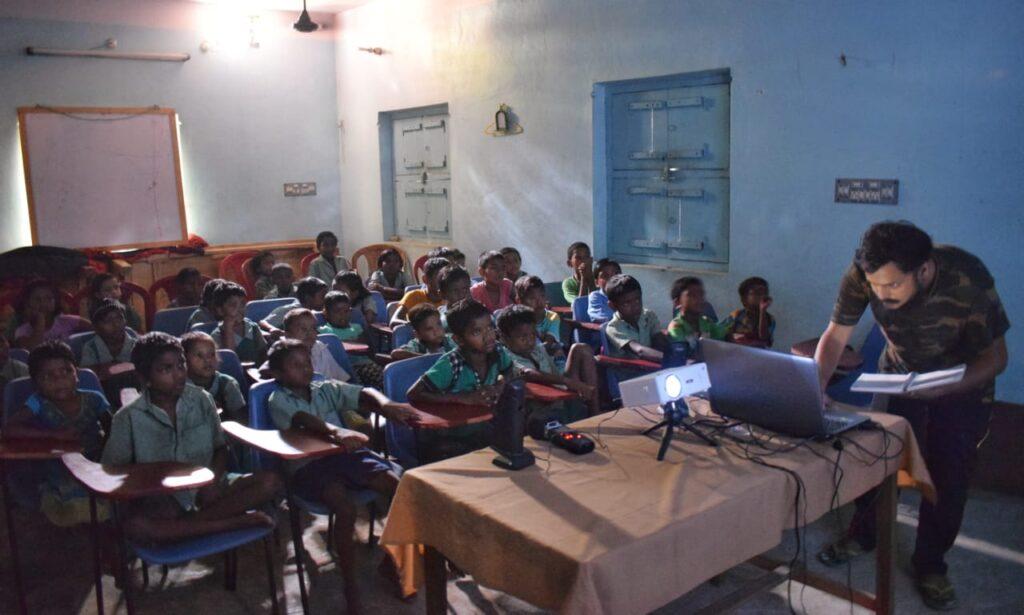
Photo credits: Aranya Bandyopadhyay
I cannot recall the month and the year when this happened, but I can narrate the incident that had an impact on me. While on the way back from a Nature walk, we came across a man who was carrying on his back, a Barred Buttonquail, which he had surely captured from the wild and put in a handmade bamboo cage. I was halfway through my attempt in explaining to the children that this was an unsustainable practice in the context of these times, when, to my surprise, many of them surged ahead to round up the man. Being an outsider there, I chose to stay back, not wanting to interrupt the incident that was unfolding in front of my eyes. The man, of course, did not give up his catch, but the children had taught me a lesson.
Since then, I have gathered up the resort to intervene, when I have come across illegal bird-peddlers in my own backyard, i.e. Kolkata, on multiple occasions, mostly to create fear in them that people are watching and what they are doing is punishable by law. I am still unsure whether I would like to be the person who is responsible for putting someone with less privileges than myself, behind bars, though.
Have you noticed any changes in your learners after they received exposure to birds and nature-based learning? If yes, what are they? If not, why do you think that is?
Now that I am working as a full time nature educator/facilitator, children expressing the fact that their eyes have been opened to the world of birds, that they never knew that so many different species were found right next to their homes, are a daily occurrence. Every birdwatcher must agree that this is a major, and an almost overnight change with a lasting, life-altering impact that we have personally experienced. The seeds for conservation as a way of life are sown when this happens. I believe that regular work with the same group can nurture the seeds into the trees of environmental stewardship, which brings me to an incident from the Bankura project; during our incubation period;
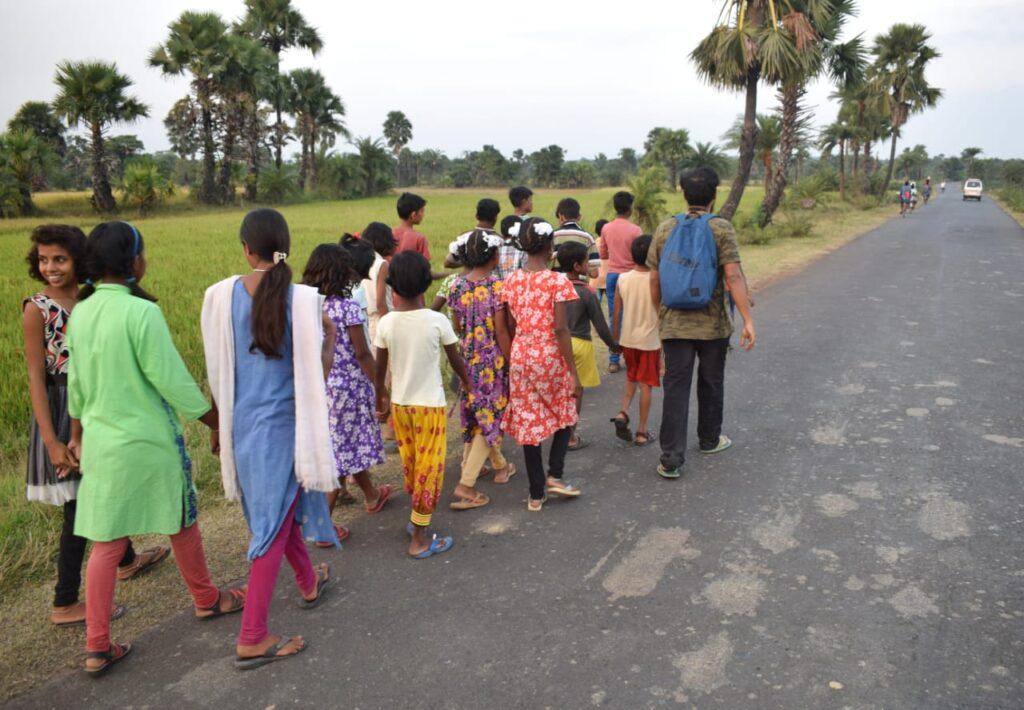
Photo credits: Anushree Chakraborty
The children there belonged to a hunting tradition and we often came across their stories of how they would capture rats nesting in Palm trees, the taste of bird meat and so on. We worked there for 4 years with the same group, staying with the children twice or thrice every year for a few days at a time. During this period, a particular child had grown from being the most outspoken in his hunting strategies, to being a reporter of bird-capturing incidents within the village. I hope he is still watering his tree and perhaps, sowing seeds elsewhere.
What message would you have for your fellow educators, or somebody starting out in their nature education journey?
I would definitely like to make connections with fellow educators/facilitators around the world and learn from them. I’ve come to realize that collaboration is the cornerstone of progress and I would like to spread this message as much as possible.
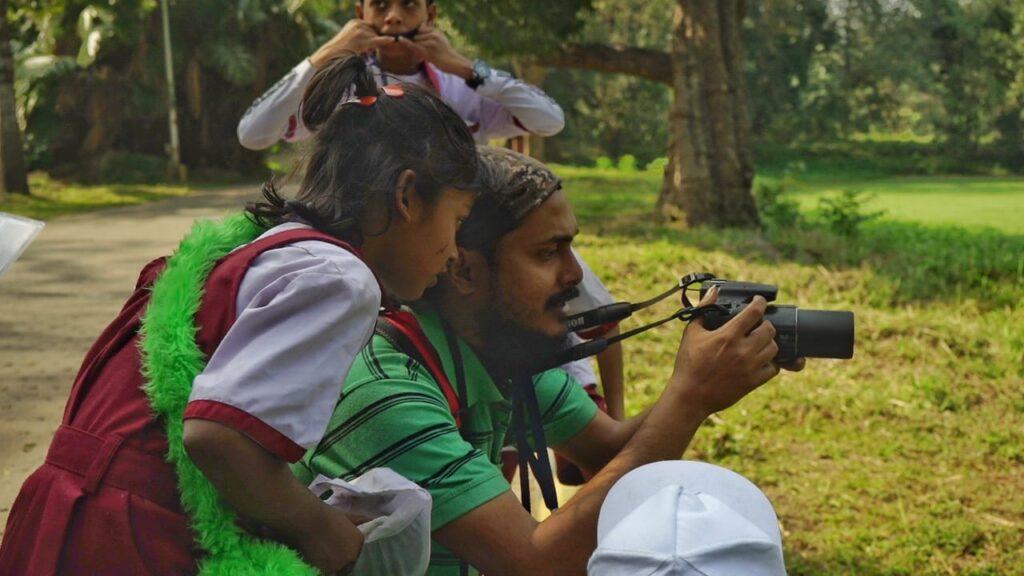
Photo credits: Prachi Bedi
For someone starting their journey as a teacher, children can be the easiest and the toughest. The more we try to control them, the less likely that any good will come out of it. The more space we provide for them, the more likely that the boundaries within that space will be maintained. For example, if you instruct a child to not go in the bush, it is likely that someone or the other would like to check out what it is that you do not want them to see. Rather, the approach should be to say, “Run around on the trail as much as you want to!” if you really do not want them to step on a venomous snake, literally and metaphorically. The rest is the easier part!

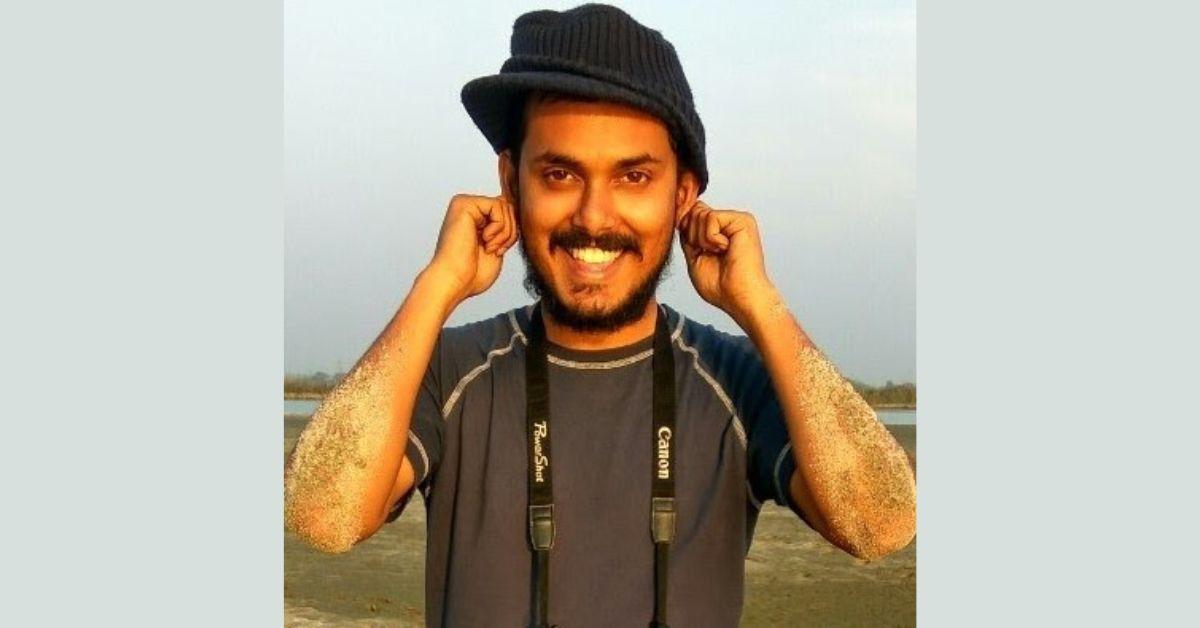
It absolutely felt amazing while going through the journey of Titash, share the same feeling but never had the guts or courage to follow the heart. May this feeling of your get infectious through the generations to come by. All the best